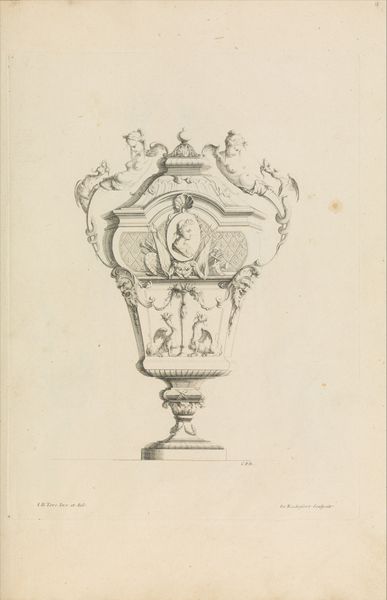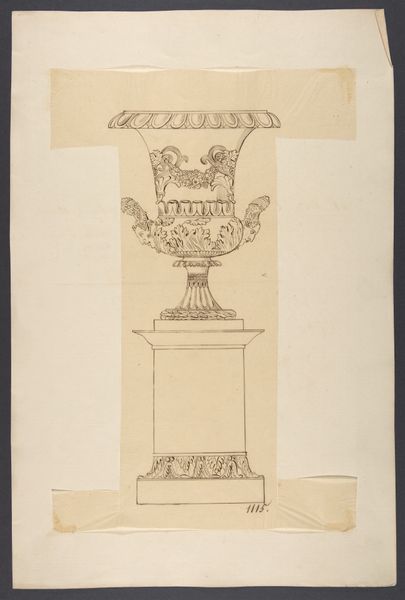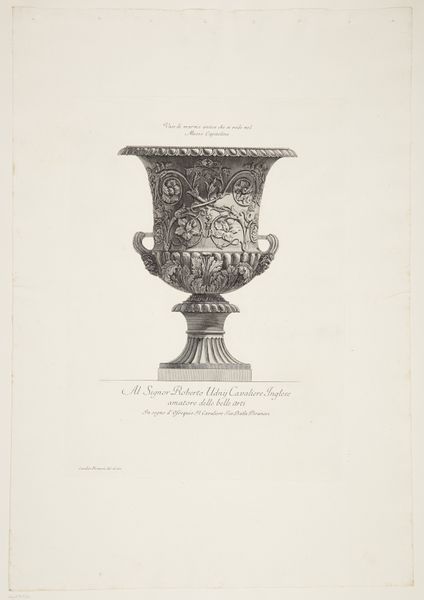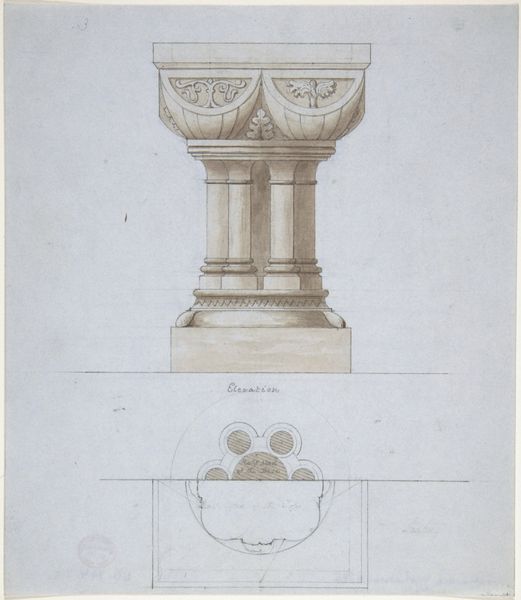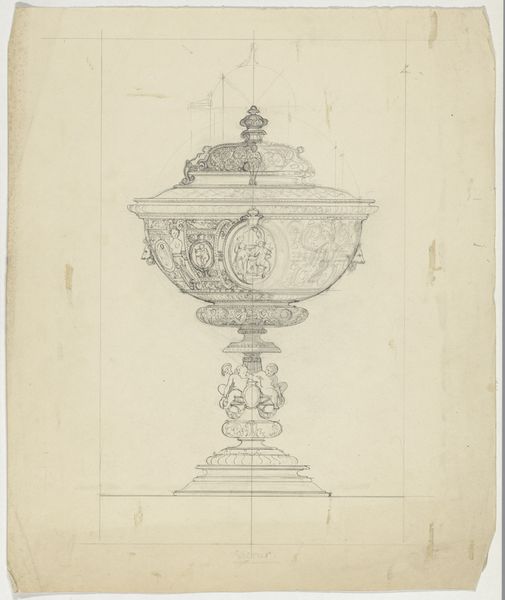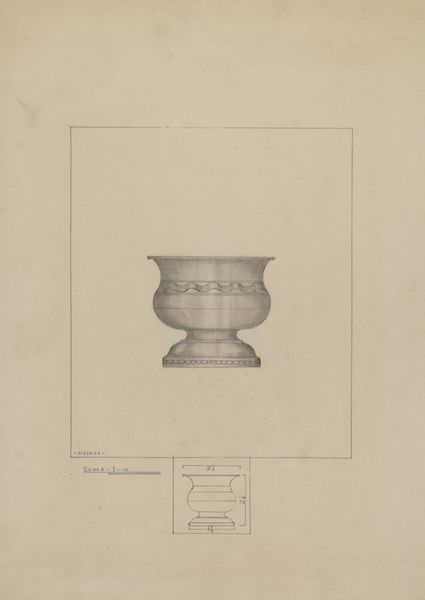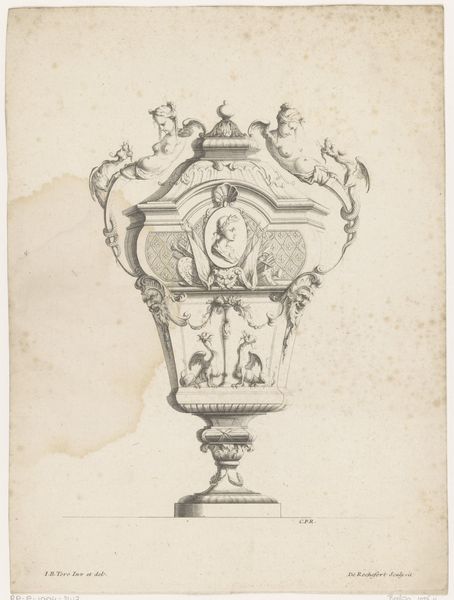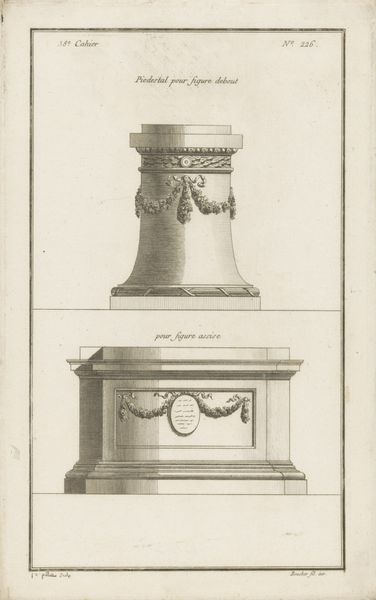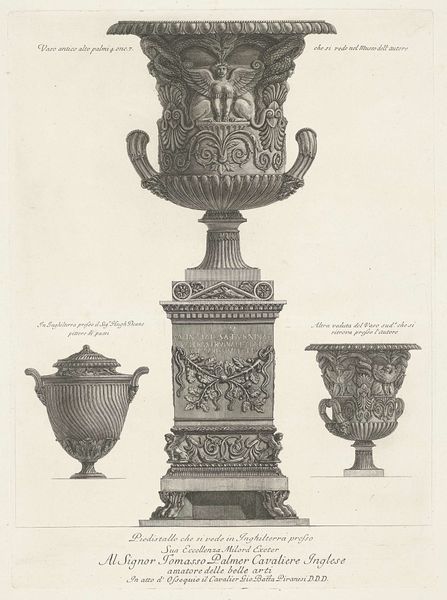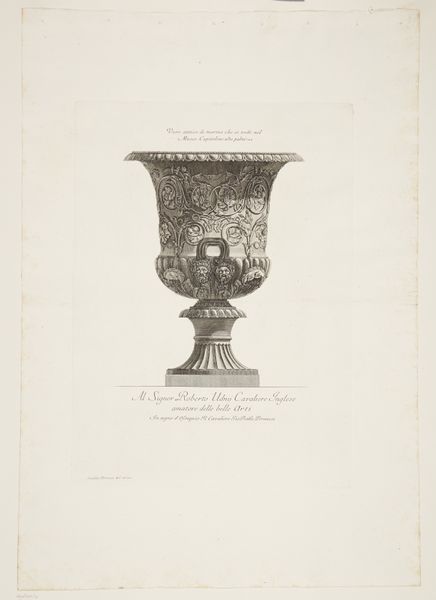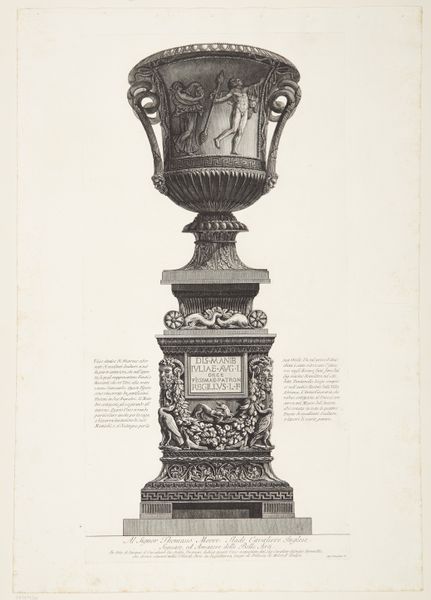
drawing, print, ink, pen, architecture
#
drawing
# print
#
ink
#
geometric
#
arch
#
pen
#
architecture
Copyright: Public Domain
Curator: This drawing, "Romanesque Style Font and Plan," made anonymously sometime between 1840 and 1870, offers a meticulous design for a baptismal font. The media? Pen and ink with a subdued color palette. Editor: Immediately, I am drawn to the geometric clarity and those meticulously rendered ornamental details. The interplay of curves and sharp angles creates a striking visual balance. It almost feels like peering into a three-dimensional mathematical equation. Curator: Absolutely. This wasn't just an artistic exercise, though; it speaks to the architectural revival movements of the 19th century. There was a renewed interest in earlier periods, particularly the Romanesque style with its sturdy, grounded aesthetic and religious associations. Notice the arches; they are a hallmark of Romanesque design. Editor: Yes, and the tiered structure. My eye travels upward from the base to the bowl, the weight gradually lightening to focus our attention there. And those swirling decorations, the symmetrical leaf carvings--how interesting their rhythm and placement. I sense something powerful in how the various visual textures combine. Curator: Consider the social function too. Fonts are not merely decorative elements; they're central to religious rites, specifically baptism and initiation into Christian communities. It highlights the relationship between art, ritual, and societal values. The baptismal font serves as both a physical and symbolic gateway. The design shows how such architectural objects served the state as much as religion. Editor: And perhaps reveals much more about what architectural order represents within an era grappling with identity, something beyond merely functionality? Looking closely at line quality and its deliberate curves--there’s evidence of intention. This speaks not only to architectural construction, but how designers wanted it to feel on a conceptual level for people. Curator: An insightful point; studying this work reminds me that aesthetic tastes, like everything else, reflect shifting cultural norms. It provides a visual manifestation of this Victorian-era obsession with past architectural languages. Editor: Yes, that kind of perspective certainly casts new light on artistic output.
Comments
No comments
Be the first to comment and join the conversation on the ultimate creative platform.
